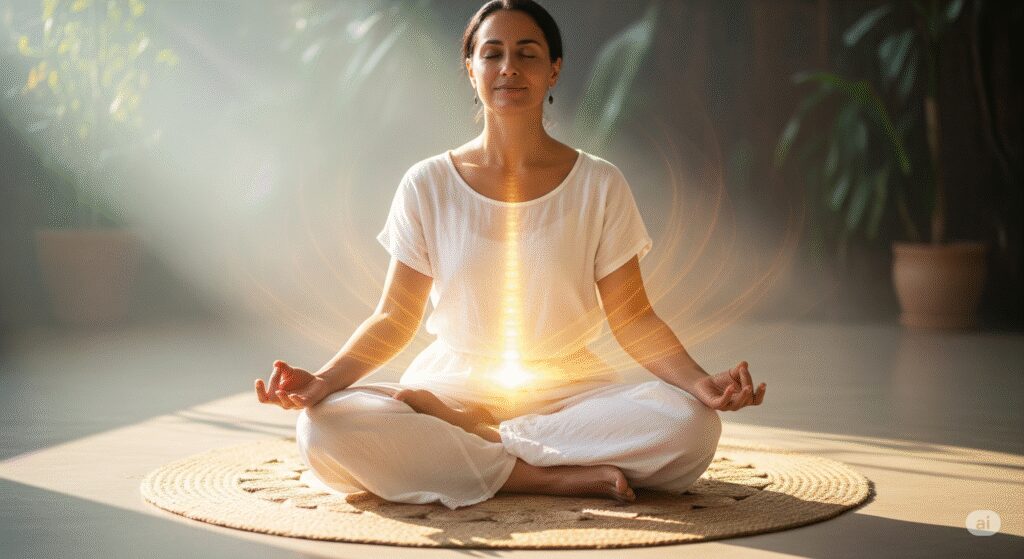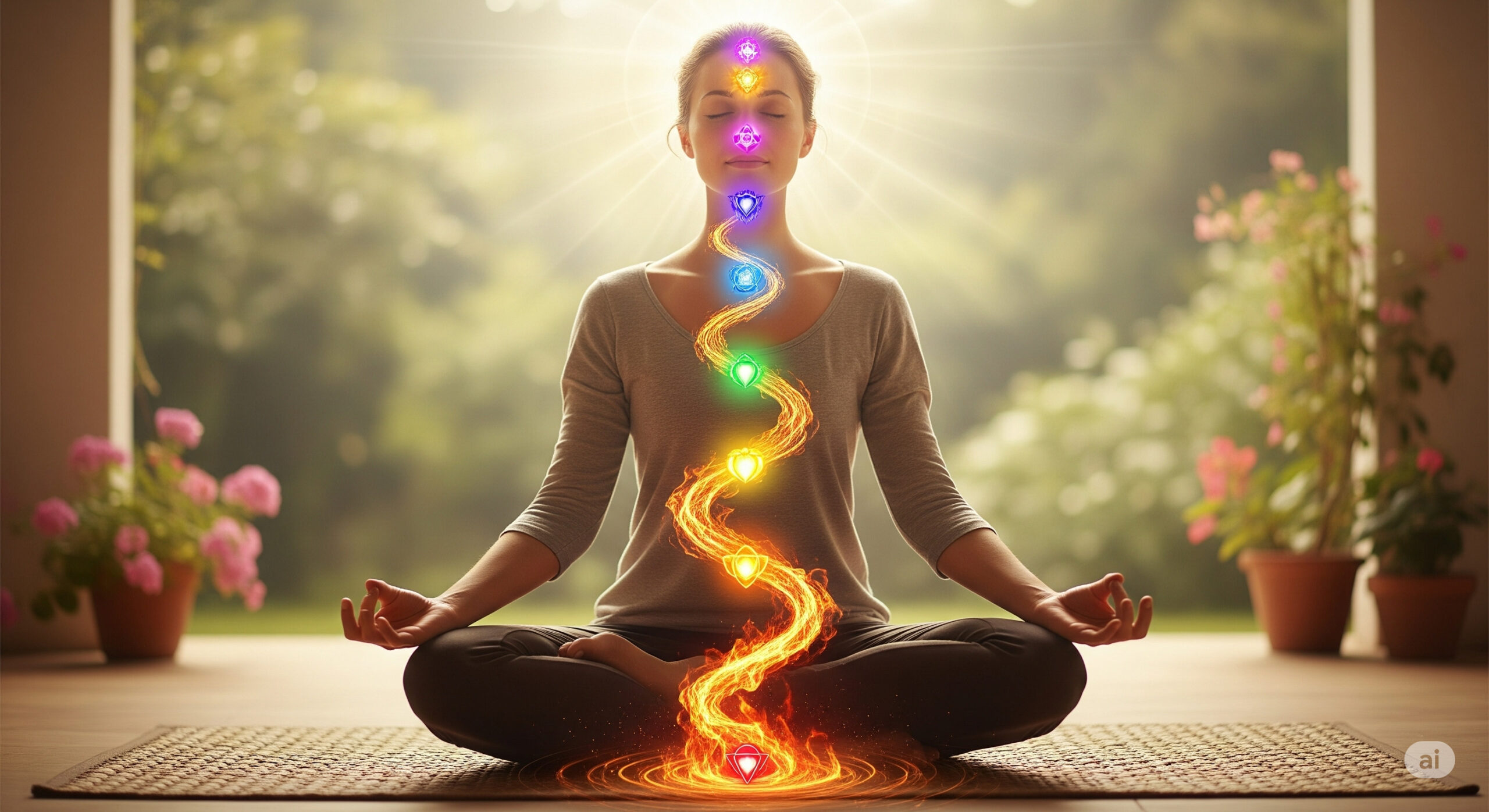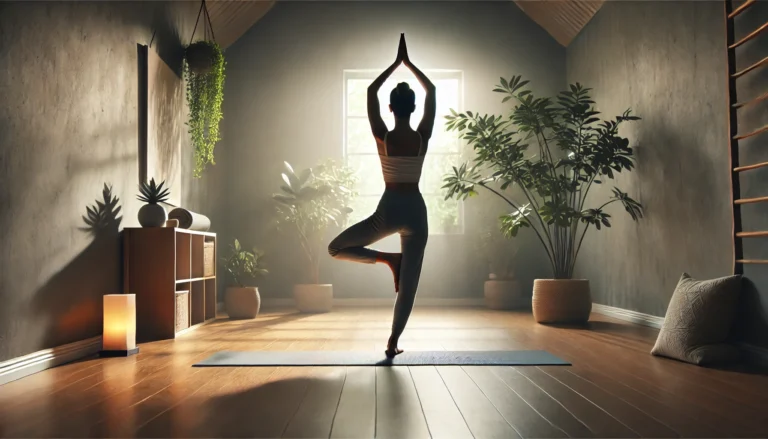Why Is Kundalini Yoga Dangerous? 7 Shocking Reasons
Why is Kundalini yoga dangerous? While this powerful practice is known for its transformative potential, it also comes with risks if not approached carefully. The intense energy awakening and psychological effects can be overwhelming for some. In this post, we’ll explore 7 legit reasons why Kundalini yoga can be dangerous and why it’s important to practice with caution and the right guidance.
Thank you for reading this post, don't forget to subscribe!
1. What Is Kundalini Yoga?
Kundalini Yoga is a powerful and transformative practice that many yogis swear by for its profound spiritual benefits. Known for its intense energy, it’s often referred to as the “Yoga of Awareness.” Kundalini yoga combines movement, meditation, breathing techniques, and chanting to awaken the dormant energy, called Kundalini, believed to reside at the base of the spine. When awakened, this energy is said to travel up the spine, igniting higher levels of consciousness.
However, not all practitioners are aware of the potential dangers that can come with the practice. Some call it “dangerous,” but why is Kundalini yoga considered so? Is it a true spiritual awakening, or is there something more to it? In this article, we’ll explore why Kundalini yoga is dangerous for some people, touching on the risks involved, the misunderstood aspects, and the importance of practicing with the right discipline.

2. The Energy Awakening: What Really Happens
When practicing Kundalini yoga, the goal is to awaken the energy coiled at the base of your spine and allow it to rise through your chakras. This awakening process can be incredibly intense, both physically and spiritually. Kundalini practitioners claim that once this energy is awakened, it can lead to heightened states of consciousness, deeper self-awareness, and greater spiritual connection.
However, the process of awakening the Kundalini energy is not always as peaceful or enlightening as some would hope. While many people experience blissful moments of clarity, others may encounter unsettling or even frightening physical and psychological reactions.
What Happens During Awakening?
- Physical Symptoms: Some practitioners report physical sensations like shaking, sweating, heat, or a feeling of electricity running through their bodies as the Kundalini energy rises. These sensations can be overwhelming, especially for beginners who might not be prepared for such intense experiences.
- Psychological Impact: Mentally, the energy awakening can bring about emotional release, causing feelings of fear, anger, or sadness to surface. Some people experience disorientation or a sense of losing touch with reality during the awakening process, especially if the energy moves too quickly or is improperly channeled.
While some practitioners manage these experiences with guidance and mindfulness, others struggle with the intensity of the awakening, leading them to believe that Kundalini yoga is dangerous. The physical and psychological symptoms can sometimes feel overwhelming or out of control, especially for those who don’t understand what’s happening.

3. Reported Side Effects (Physical, Psychological)
Kundalini yoga is not for everyone. As with any practice that involves deep spiritual awakening and energy work, there are risks involved. Some of the side effects can be severe, especially if the practice is rushed or done without proper guidance. Let’s break down the common physical and psychological side effects of Kundalini awakening.
Physical Side Effects
- Exhaustion and Fatigue – Many practitioners experience a deep sense of fatigue after a Kundalini awakening session. The energy surge can be physically demanding, leading to a sense of depletion, especially if the body is not properly prepared for the energy it’s experiencing.
- Shaking or Tremors – Some practitioners report uncontrollable shaking or tremors in their bodies, especially after intense sessions. This can be a sign of energy moving through the body but can be alarming to those who are unprepared for it.
- Overstimulation of the Nervous System – Kundalini awakening can overstimulate the nervous system, leading to symptoms like dizziness, headaches, or a feeling of being “out of body.” The energy rising through the spine can create an intense rush of sensation that overwhelms the physical body.
- Imbalance in the Chakras – If the energy rises too quickly or the chakras aren’t properly aligned, the body can experience an imbalance in its energy system. This can cause physical discomfort and lead to an inability to properly ground the energy.

Psychological Side Effects
- Emotional Turmoil – Awakening the Kundalini energy often brings unresolved emotions to the surface. Fear, anxiety, depression, and frustration can come up unexpectedly. Some practitioners report feeling like they are “losing control” of their emotions.
- Altered Mental States – Some practitioners experience mental disorientation, or what is often described as psychosis in extreme cases. This includes feeling detached from reality, paranoia, or a loss of personal identity. If Kundalini energy is awakened too quickly or improperly, the psyche may not be able to integrate the experience, leading to intense mental confusion.
- Spiritual Crisis – The intensity of the energy awakening can sometimes lead to a spiritual crisis. Practitioners may struggle with questions about their identity, purpose, or spiritual beliefs. This is why it’s crucial to practice Kundalini yoga with a trained teacher or spiritual guide who can offer support during these intense periods.

4. Is Yoga Demonic or Just Misunderstood?
One of the most common misconceptions about Kundalini yoga is that it has demonic connotations or is a dangerous practice to avoid. Some people, particularly those with limited knowledge about the practice, wonder, “Is yoga demonic?” While some might say yes due to misunderstandings or fear of the unknown, Kundalini yoga itself is not demonic. In fact, it is deeply rooted in spiritual traditions that seek to promote spiritual awakening and enlightenment.
Why is It Misunderstood?
Many view Kundalini yoga as “dangerous” because it’s not a practice that can be learned or understood in a casual way. It requires discipline, mindfulness, and proper guidance. Unlike more physical forms of yoga, such as Vinyasa or Hatha yoga, Kundalini yoga taps into powerful spiritual energies that must be approached with caution and respect. Without understanding the full scope of yoga and discipline, those new to it can feel overwhelmed or fearful of the sensations that arise during the practice.
The idea of awakening an internal energy that can lead to deep emotional, physical, and spiritual shifts can be intimidating for some. However, when practiced with the right discipline, Kundalini yoga can be a powerful tool for personal growth and spiritual enlightenment.

5. Practicing with the Right Discipline & Mindset
To truly benefit from Kundalini yoga, one must practice with the right mindset and discipline. Without proper yoga discipline, the practice can lead to unbalanced energy and a chaotic spiritual journey.
Why Discipline is Key
Kundalini yoga, like other forms of yoga, requires a deep level of commitment. It is not a practice that can be rushed, nor should it be approached casually. To awaken the Kundalini energy safely and effectively, you must build a foundation of mindfulness and discipline.
Here are a few tips for practicing Kundalini yoga with the right discipline:
- Start Slowly: Don’t rush the process of awakening the Kundalini energy. Begin with simpler yoga and meditation techniques to build your mental and physical strength.
- Find a Qualified Teacher: Working with a trained instructor can ensure you are practicing safely and with guidance.
- Practice Mindfulness: Stay grounded by practicing mindfulness during your sessions. Be aware of your thoughts, feelings, and sensations during each practice.
- Allow Time for Integration: After each practice, take time to reflect and integrate the experience. Don’t rush to move on to the next session.

6. How to Find Balance: Align with the Soul of Yoga
At the heart of yoga is the soul of yoga—a deep connection with your inner self and the universe around you. To safely navigate the intensity of Kundalini yoga, it’s important to connect with the soul of the practice, which emphasizes balance, mindfulness, and integration. When Kundalini energy rises within, it can bring about significant transformations, but only if it’s aligned with your highest purpose.
To find balance during your practice, focus on the following principles:
- Surrender to the process: Trust that the energy will rise when it is meant to. Don’t force it.
- Self-awareness: Cultivate self-awareness and observe the effects of the practice on your body, mind, and spirit.
- Consistent practice: Build your practice gradually over time. Avoid rushing to awaken the energy prematurely.

7. Conclusion
Kundalini yoga is undoubtedly a powerful practice, but it’s not without risks. While some might view it as dangerous or even demonic, it is simply a misunderstood form of yoga that requires respect, discipline, and patience. The potential physical, psychological, and emotional effects of awakening Kundalini energy are real, but when approached with the right discipline and mindset, this yoga practice can lead to profound personal growth and spiritual enlightenment.
So, if you’re considering Kundalini yoga, practice it mindfully, with a qualified teacher and a deep sense of respect for its power. Yoga and discipline are inseparable, and through careful practice, you’ll be able to safely navigate the intense energy and unlock its full potential.

FAQ
1. Is Kundalini Yoga safe for beginners?
Yes, Kundalini yoga can be safe for beginners if practiced with caution and proper guidance. It’s essential to start slowly, with a qualified instructor, and to listen to your body throughout the process.
2. Can Kundalini yoga cause mental health issues?
Kundalini yoga can trigger emotional or psychological reactions, especially when the energy is awakened too quickly. It’s important to practice with mindfulness and to seek support if needed.
3. How can I prepare for Kundalini yoga?
Begin by practicing other forms of yoga or meditation to build your mental and physical strength. Learn about the practice and work with a teacher before diving into intense Kundalini sessions.
4. Is Kundalini yoga demonic?
No, Kundalini yoga is not demonic. It’s a spiritual practice designed to awaken inner energy and consciousness. Misunderstandings about its purpose and intensity have led to misconceptions.
5. What are the benefits of Kundalini yoga?
Kundalini yoga can lead to higher spiritual awareness, emotional healing, and physical strength. When practiced safely, it can be a transformative tool for personal growth.
Disclaimer:
This post may contain affiliate links. If you purchase through them, we may earn a small commission at no extra cost to you. Also, this content is for informational purposes only and does not substitute professional medical advice.







